The following true story was shared in one of my classes by a senior manager from a global corporation in South Korea. The manager’s team had worked over six months and was gearing up for a firmware release with a specific set of features.
The recently new Chief Technology Officer (CTO) of the organization participated in a pre-release meeting, and had dropped a bombshell, cancel the project! As per the CTO, similar kinds of functionalities were already available from another team, and he didn’t want to incur the associated operational costs.
What went wrong? How could this situation have been avoided?
In this article, we will look at two key knowledge areas: Communications Management and Stakeholder Management. We’ll look at how these interact and how they very much go hand-in-hand. Hence, the term of my title: the twins. If you are an aspiring Project Management Professional (PMP ®), you need to have solid understanding on how these two interact with each other.
This article is less of a discussion on Communications Management or Stakeholder Management, individually, per se. Rather, it’s more about how they interact within the knowledge area and with each other, the areas in which they overlap, and how they influence and impact each other.
Though Stakeholder Management is a separate and distinct knowledge area (KA) in the PMBOK ® Guide, the primary mode of engagement with stakeholders is communications. So, let’s start with Communications Management first. I’ll also mention some other important terms that will be used in this piece.
Communication vs. Communications
You may have noticed the word, “communications,” named such in the knowledge area. It’s not just “communication,” rather we see an extra letter, “s.” This is significant.
“Communication” is the process or act of information exchange. The information exchange among parties can happen in written or oral form, formally or informally, or take place with choice words, gesture, etc. On the other hand, “communications” is the means with which information is exchanged. These “means” include communication activities (i.e. meetings) and artifacts of communications (i.e. emails and reports). Simply put:
- Communication is the “process” of information exchange or the act of communication.
- Communications is the “means” of information exchange or the activities and artifacts of communication.
The Communications Management KA is about both communication and communications. This KA also addresses effective and efficient communication.
- Effective communication: Here the information (right message) is provided in the right format, at the right time, to the right audience, through the right channel, and with the right impact.
- Efficient communication: With this, only the information that is needed, nothing more, nothing less, is provided. If you give extra, unsolicited information, I call it “communication creep.” Like scope creep, communication creep is not desirable.
With these fundamental definitions in mind, let’s briefly see what happens in the knowledge area of communications management.
Communications Management–What Happens?
This KA has three processes and they interact with each other as shown below.
Below are the key points about interactions among these three processes.
- Plan Communications Management process: In this process, we first decide on an effective communication strategy. This leads to communication planning. The Communications Management Plan is prepared. This plan addresses how the information is needed and lays out the requirements of stakeholders, keeping in mind the needs of the project.
In other words, here you plan for effective and efficient communication.
The key output for this process is Communications Management Plan (CommsMP or CMP). - Manage Communications process: Next, you distribute project information in accordance with the Communications Management plan in this process. Other than distribution of information, you also ensure that communication is timely, relevant, and appropriate.
Here you ensure effective and efficient communication.
The key output for this process is Project Communications, which includes project presentations, blogs, ad-hoc reports, and other communication artifacts. - Monitor Communications process: Finally, we monitor the communications throughout the life cycle of the project. This ensures the changing information needs of the project (as it passes through various stages), as well as the needs of the stakeholders (as their engagement level changes along with the project life cycle) are met.
This process ensures the optimal flow of information.
The key output for this process is Change Requests.
The interactions among the processes of Communications Management KA is explained in this video [duration – 3m:31s], taken from my PMP Live Lessons. For the best experience, you may want go full-screen with HD mode and plug-in your earphones.
With this understanding of Communications Management KA, let’s move to a discussion of stakeholders and stakeholder management.
The Stakeholders
A stakeholder is one who can positively or negatively impact the outcome or objectives of the project. The stakeholder can also be positively or negatively impacted by the outcome of the project. There is also a third aspect, and that is that a stakeholder is someone who perceives to be impacted by the outcome of the project. A stakeholder can be a person, group, or organizational unit—or even an organization. The term does not mean only a person.
Examples of stakeholders are a project sponsor, a project manager, project team members, a funding organization, a performing organization, customer(s), user(s), potential customer(s), suppliers, government regulatory agencies, and media outlets, among others.
Stakeholder Management–What Happens?
This KA has four processes, and they interact with each other as shown below.
Below are the key points about interactions among these four processes.
- Identify Stakeholders process: In this process, we identify all possible stakeholders, analyze them, and document all needed information in a register–the Stakeholder Register, which is the key output of this process.
In other words, identification of stakeholders and stakeholder engagement strategies happens in this process. - Plan Stakeholder Engagement process: The Stakeholder Engagement Plan (SEP) is prepared. The plan documents appropriate engagement strategies to engage with the stakeholders throughout the life cycle of the project.
In other words, documentation of stakeholder engagement strategies happens in this process. The SEP is the key output of this process. - Manage Stakeholder Engagement process: Here we execute the engagement strategies, which we have defined previously. We communicate continuously with the stakeholder and use various interpersonal and team skills, as well as communication skills. We also address various issues raised by the stakeholders.
You could say that execution of stakeholder engagement strategies happens in this process. The key output of this process is Change Requests. - Monitor Stakeholder Engagement process: This is the last process of the Stakeholder Engagement KA, where we monitor the relationship with the stakeholder and adjust the engagement strategies as needs arise.
In other words, monitoring and adjustment of stakeholder engagement strategies happens in this process. The key output of this process is also Change Requests.
The interactions among the processes of Communications Management KA is explained in this video [duration – 4m:11s].
Do note that while we are looking at the knowledge area of Stakeholder Management, the processes are with respect to engagement, and named so. This has been noted in the above video.
The Overlap
To understand the overlapping that occurs between Communications Management and Stakeholder Management, you need to understand the content of each respective plan, (i.e. the CMP and SEP). I’ve noted a few below, and there are others.
Interaction Between Communication and Stakeholder Managements
In summary, the key plans and documents created within these two knowledge areas are:
- Communications Management Plan (CMP)
- Stakeholder Engagement Plan (SEP)
- Stakeholder Register
The above artifacts will flow, cutting across the two knowledge areas and also other knowledge areas. Let’s look next at how, considering the twin areas of stakeholder and communications management.
Interaction Point 1
The stakeholder register is created in the Identify Stakeholders process. It lists requirements of all stakeholders, along with the power, interest, influence, and impact of the stakeholders. This register acts as an input to the Plan Stakeholder Engagement process to create the SEP. At this stage, it’s a high-level plan. Here, the stakeholder engagement assessment matrix is also prepared and is documented in the SEP. The engagement matrix informs on the planned and desired level of engagement with the stakeholders. There can be various engagement levels such as Unaware, Resistant, Supportive, Neutral, and Leading.
Interaction Point 2
A high-level SEP, in turn, acts as input to the Plan Communications Management process and its input is used to create the CMP. This is because stakeholder engagement strategies are primarily fulfilled through communications.
While preparing the CMP, the engagement assessment matrix, which was prepared earlier, will again come into play. However, here, the matrix used to plan for any additional communication requirements removes the gaps in engagement. Particularly for unsupportive or resistant stakeholders, a communication styles assessment is conducted. The stakeholder communication requirements will be part of the CMP and can be referenced from the SEP.
Interaction Point 3
As you prepare the CMP, which comes as output of the Plan Communications Management process, it acts as an input to Plan Stakeholder Engagement process resulting in the creation of a detailed SEP. The communication strategies for stakeholder engagement will primarily drive the stakeholder engagement strategies. As you can see, both the CMP and SEP are iteratively prepared.
Content of the SEP can be repeated in the CMP, or it can ONLY be part of the CMP. Refer to the above table for the overlapping areas.
Interaction Point 4
The execution of the CMP and SEP happens, respectively, in the Manage Communications and Manage Stakeholder Engagement processes. In both these processes, both the CMP and SEP act as inputs. Also, both the CMP and SEP are updated in the outputs of these processes. Feedback and conflict management are key skills used while managing communications and stakeholder engagement.
Interaction Point 5
The monitoring of the CMP and SEP happens, respectively, in the Monitor Communications and Monitor Stakeholder Engagement processes. In both these processes, both the CMP and SEP act as inputs, and both the CMP and SEP are updated in the outputs.
The stakeholder engagement assessment matrix that was created earlier is used in both the processes of Monitor Communications and Monitor Stakeholder Engagement. However, the context changes somewhat.
In communications management, the engagement matrix is checked to see if the communication strategies employed have been effective or not. In other words, it checks the effectiveness of project communications. If any adjustment is needed in communications or a revision is needed in stakeholder communication requirements, then change requests (CRs) should be raised accordingly.
On the other hand, in stakeholder management, the engagement matrix is checked to see if the desired engagement level of the stakeholder has been changed as compared to the planned engagement level. If an improvement is needed for change in the desired engagement level, then change requests (CRs) are raised.
Interaction Point 6
Stakeholder identification is an iterative process. When a new stakeholder is identified or an existing stakeholder changes, the process of Identifying Stakeholders is again invoked. Both the CMP and SEP act as input to this process in such subsequent invocations of the Identify Stakeholders process, and both these plans are also updated in the output. There can be change requests (CRs) raised in subsequent invocations of the Identify Stakeholders process.
All change requests raised from both Stakeholder and Communications Management are analyzed, processed, and addressed through the integrated change control, where the change control board (CCB) decides on the approval, rejection, or deferment of the CRs.
Practical Exercises
Now that we understand the processes, key inputs and outputs, interactions, and overlapping areas between Communications and Stakeholder Management KAs, let’s do a few exercises.
In the below figure, a set boxes or blocks is shown. Each represents a process–either in Communications Management or in Stakeholder Management. Do note that these processes can interact with many other processes in other knowledge areas with project plans and documents flowing across. However, for the sake of this example, let’s focus on these two “twin” knowledge areas.
I’ve put questions in each of these blocks. Can you answer them and replace the questions with process names?
The answer should be one of the processes that we saw earlier for Communications Management and Stakeholder Management KAs. All the change requests are addressed via integrated change control.
Scroll down only if you have answered!
. . .
. . .
. . .
Your results should look as shown below.
Next, can you identify one key output for each process?
Do not scroll, before you have answered.
. . .
. . .
. . .
The final figure with all the key inputs and outputs across the processes is shown below.
As you can see, the flow of Stakeholder Engagement Plan (SEP) is highlighted in pink colored lines, whereas the flow of Communications Management Plan (CMP) is highlighted in orange colored lines.
The interactions among the processes of the twin knowledge areas are explained in this video [duration – 7m:37s], with additional explanations. It’s taken from PMP Live Lessons.
Guidance for the PMP Exam
Questions related to Stakeholder Engagement and Communications Management can be tricky in the context of the PMP exam. Since the concepts are overlapping, they can be quite confusing for many PMP aspirants. I’ve outlined the interactions between the twins of project management taking into account a few tools and techniques, plans, and documents. There are a number of other plans, tools, and techniques, as well as documents, which will flow across. I believe, with the explanations provided in this article, you should be able to understand those flows, interpret what’s being asked, and answer the exam questions.
What Went Wrong
Before I close, let’s revisit what went wrong in the story I shared at the beginning of this piece, where the CTO cancelled the project.
As you may have correctly guessed by this time, the CTO was not even identified as a stakeholder or documented in the project’s stakeholder register. Hence, the CTO’s power, interest, influence, and impact were not at all considered. Obviously, this in turn led to no stakeholder engagement powered by communications or otherwise. This failure led to the cancellation of the project, which no manager ever wants to see. The lesson to be learned is that, as a project manager, you should be very careful to navigate both communications management and stakeholder engagement proficiently.
If you have comments, suggestions, or views, please do share them below.
References
[1] PMP Live Lessons – Guaranteed Pass or Your Money Back, by Satya Narayan Dash
[2] PMP 35 Contact Hours Online Course with Money Back Guarantee, by Satya Narayan Dash
[3] I Want To Be A PMP: The Plain and Simple Way To Be A PMP, 2nd edition, by Satya Narayan Dash
[4] Project Management Body of Knowledge (PMBOK) Guide, 6th Edition, by Project Management Institute (PMI)


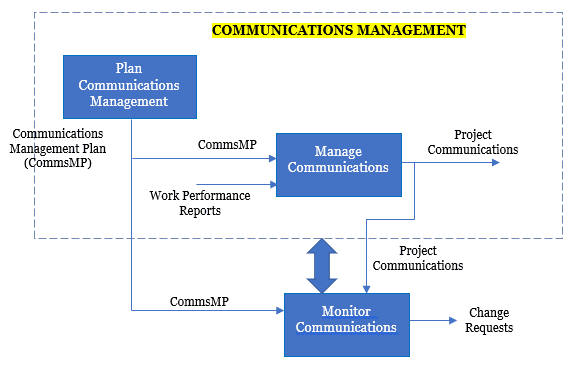
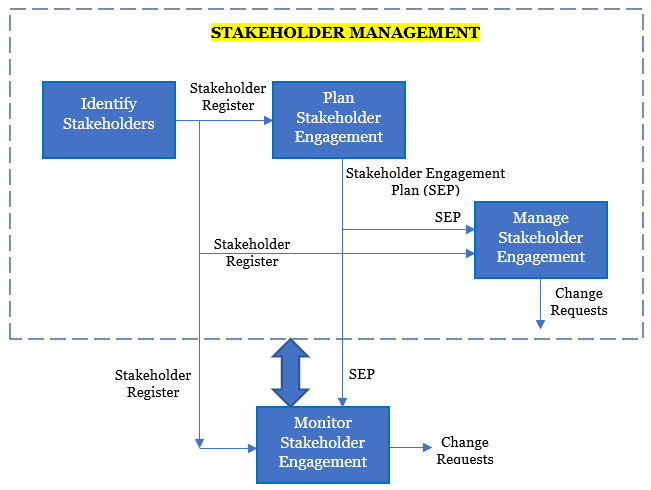
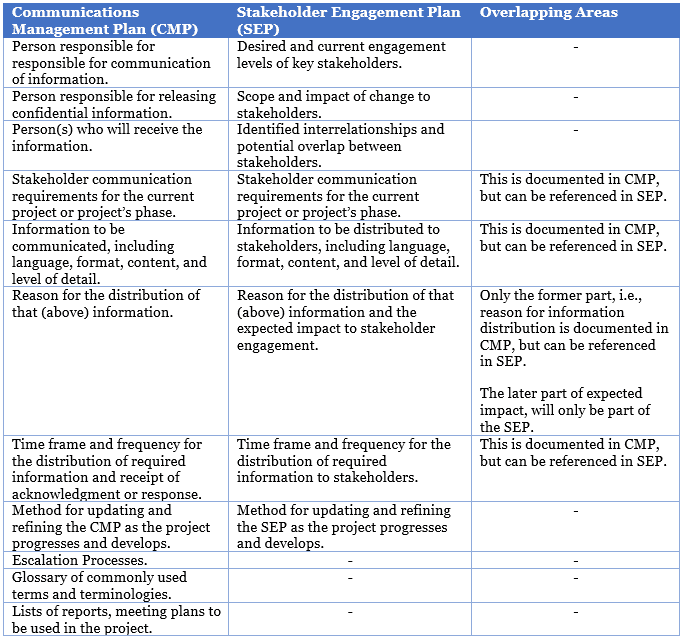
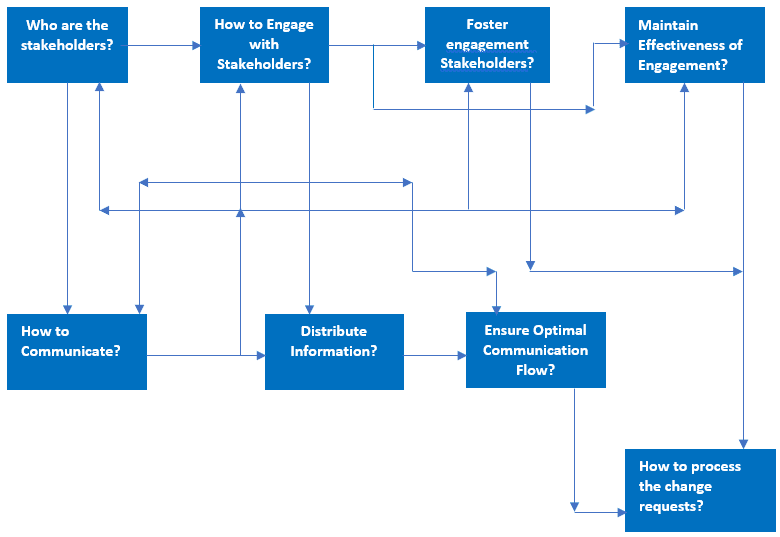
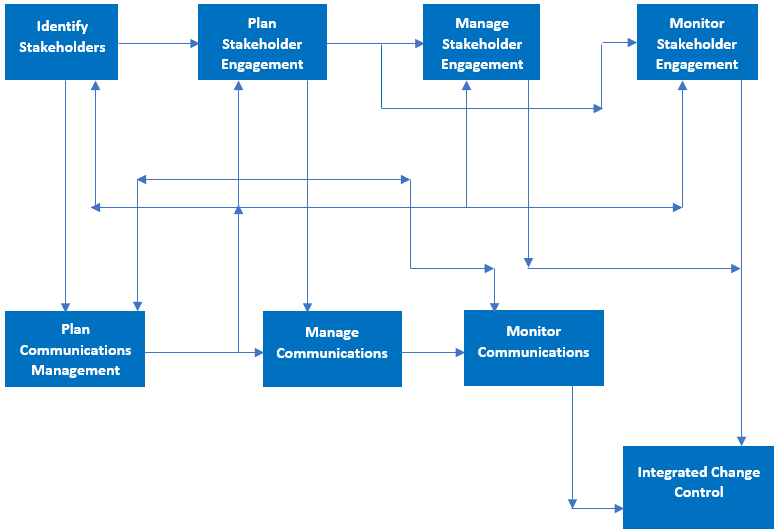
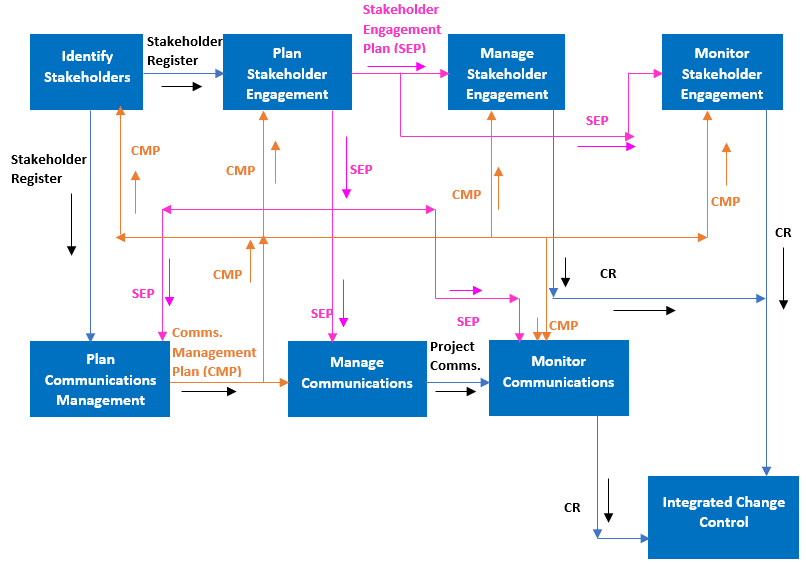
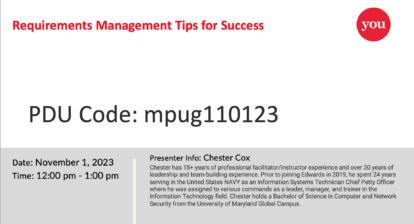
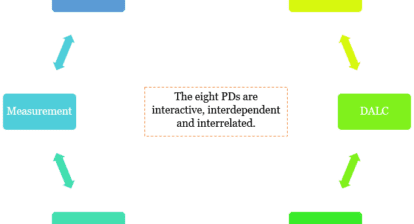


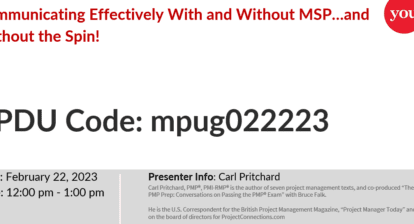
krishnan sudharsanam
This is such a wonderful document for any PMP aspirant. This document gives clear bifurcation between Communication and SH engagement process.
The flow diagram will make our understanding much deeper and clearer on the concepts.
we have several such detailing in the PMP Live Lessons – Guaranteed Pass or Your Money Back source. Really more than value for money.
Satya Narayan Dash
Thank you Stephanie. The sincerity of your comment tells me you are a great teacher. Glad you like it.
Satya Narayan Dash
Thank you Krishnan. Yes, the article aims to give a deeper understanding between Communications Managment and Stakeholder Management for aspiring PMPs. Appreciate you liking the article and PMP Live Lessons.